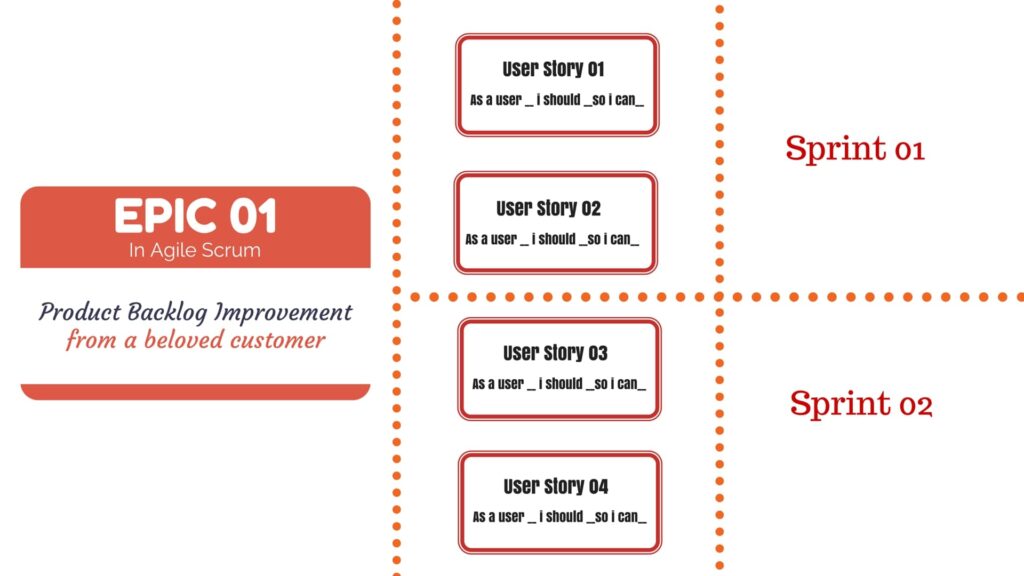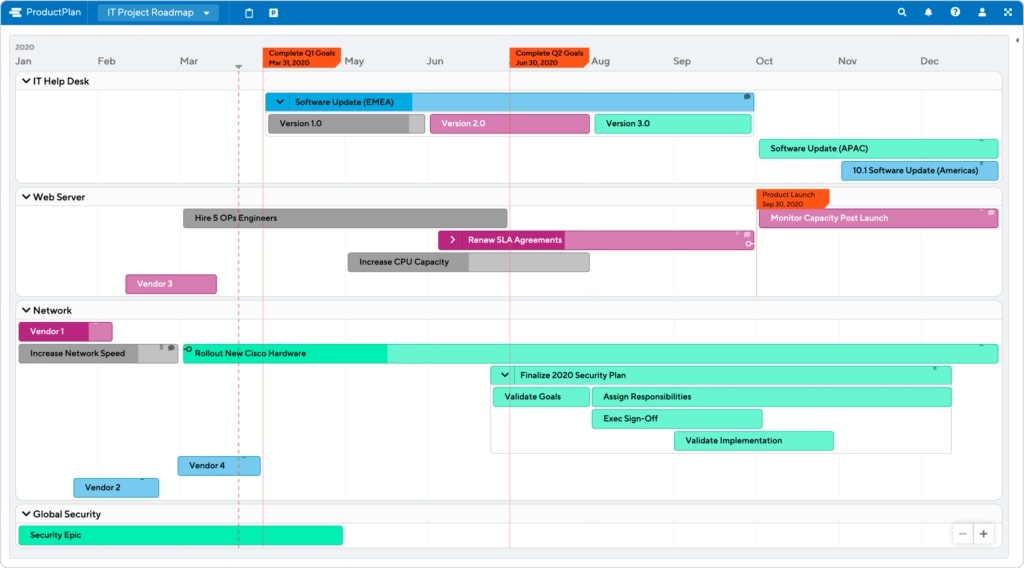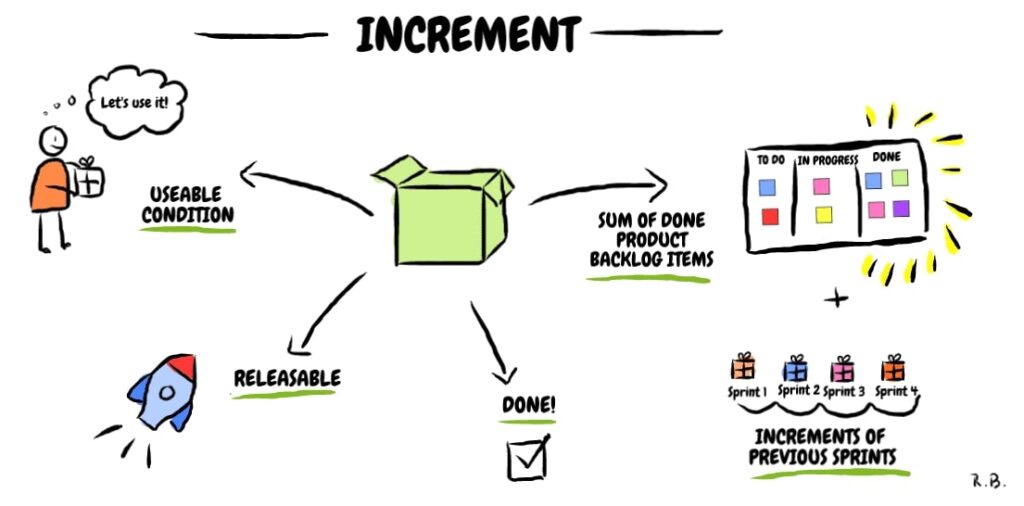Establishing a clear workflow is a daunting pursuit for software development teams who handle large and complex projects.
Teams mustn’t rely on the traditional waterfall methodology for software development. Depending on your project, it leads to delays and a higher chance of errors as teams attempt to predict every step of the project in advance.
Managing a complex project requires a flexible and organized approach that accommodates changes. Agile project management is a helpful technique that project managers employ to manage a large project by breaking it down into smaller, more manageable parts.
If you are looking to improve your project management skills, you must learn about the agile epics.
This article discusses agile epic and how it helps you manage a huge project.
What is an Agile Epic?
An agile epic is a large project broken down into smaller tasks referred to as user stories. Think of agile epics as a mini-project within a larger project. Project management teams use it in agile software development to manage multiple projects. It encompasses multiple teams, like the project development team, marketing team, and various other teams.

Credits: Yodiz
Epics allow project managers to break down a large project into manageable pieces and help developers understand the project requirements better. It also allows for more flexibility in the development process since it enables teams to make changes along the way without affecting the overall project timeline. In doing so, project teams better understand the details of an epic by utilizing customer feedback and the addition and removal of user stories.
Agile Epic Example
Agile epics have many applications in the software development world. Here are some common agile epic examples:
Development of Mobile Application
Developers have the option to employ epics in the development of a mobile application. Each feature of the application is an epic. For example, the development of the login page, sign-up page, and home page are all types of epics. The developers then break down each epic into smaller user stories.
Development of a new Website
The software developers team also divides the development of a new website into epics. For example, the development of the home page, About Us page, and Contact Us page are all types of epics. Developers have the chance to further break down each epic into smaller user stories. Epics enable developers to understand various aspects of a website better.
Epics in an Agile Program
In ancient times, the word “Epic” referred to describe long poems that told the tales of great heroes and their brave deeds. The description of this word changes over time. Nowadays, this term refers to something stunning.
In the field of software development, epics refer to a collection of various tasks that teams must execute to achieve a common goal. An epic is a big user story that takes more than one single sprint or iteration to complete.
Understanding agile epic is crucial for every project manager who wants to implement an agile methodology in software development. Following are some terms you need to learn to understand the concept of agile epic better:
Product Roadmap
A product roadmap is a graphical representation of the development journey of a product. It includes all the features that need to be developed, their priority, and the estimated delivery time. It also consists of the goals of the product and how to deliver it to the end-user.

Credits: Product Plan
User Story
A user story is the smallest piece of work that teams complete in an iteration. It is a description of the functionality from the user’s perspective.
Themes
Themes are long-term business goals that take more than a single iteration to execute. They offer an overview of what teams must accomplish and plan the development journey.
Practices for Creating Agile Epics
Writing epics enable development teams to deliver a product that meets the customer’s needs. It assists agile teams in avoiding misunderstandings during the development process and helps ensure that the final product is of high quality. The following are some of the best practices for creating agile epics:
Involve the Entire Agile Team
Creating an agile epic is the key responsibility of a product manager. However, the entire agile team must participate in the process. The development team provides valuable insights into the product and how they deliver the user story in the best way possible.
Structure the Specifications of the Agile Epics
The product manager must work with the development team to determine the specifications of the agile epics. They must consider the customer’s needs and the goals of the product. Following are the basics specs that development teams must include in an agile epic:
Introduction
It indicates what you are creating and the purpose of the product.
Requirements of the Product
It covers all the requirements of the product, such as functionality, performance, and security. A product development team must add the description of the design and how you are going to release it.
Technical Requirements
The development team must describe the technical details, such as the programming language, platform, and database.
Designing Requirements
The product manager must include the design requirements, such as color schemes, fonts, and layouts.
Choose the Metrics of Agile Epics
To ensure the success of agile epics, you need to select the right metrics. The product manager must work with the development team to identify the metrics that the team must track.
Identifying and measuring the metrics of the agile epics help understand the progress of the product and whether it is on track. Tracking the progress of various metrics also allows the development team to make necessary changes to the product. It also keeps the team focused on the goal.
Determine the Delivery Duration of Agile Epics
The product manager development team determines the delivery duration of the agile epics. They need to ensure that the team delivers the agile epic within the specified timeframe. The delivery duration mustn’t be too long or too short.

Credits: Let’s Scrum It
If the delivery duration is too long, it impacts the quality of the product. On the other hand, if the delivery duration is too short, it leads to unrealistic expectations and challenges the development team to meet the customer’s needs.
Identify the Hurdles in the Work Process
The teams must identify the potential hurdles in the work process and plan accordingly. They need to work with the development team to find solutions to the problems. It is crucial to identify the risks early on to mitigate them.
Optimize an Agile Epic
The product manager must work with the development team to optimize the agile epic. They need to ensure that the agile epic meets the customer’s needs and aligns with the company’s goals. To optimize the agile epic, you need to automate it and make it more efficient.
Automating the agile epic helps reduce the delivery time and improve the quality of the product. Following are some common automation rules:
- Include the stories to the backlog while writing an agile epic.
- Allow stories to close when the development team finishes working on them.
- Alter the agile epic status with the change in status of any of the linked issues.
Agile Epics: Key Takeaways
Agile epics are a top solution among agile teams to the problem of managing and delivering products.
They help ensure that the product meets the customer’s needs and aligns with the company’s goals.
Get help from agile epics to manage a project and deliver a high-quality and successful product.